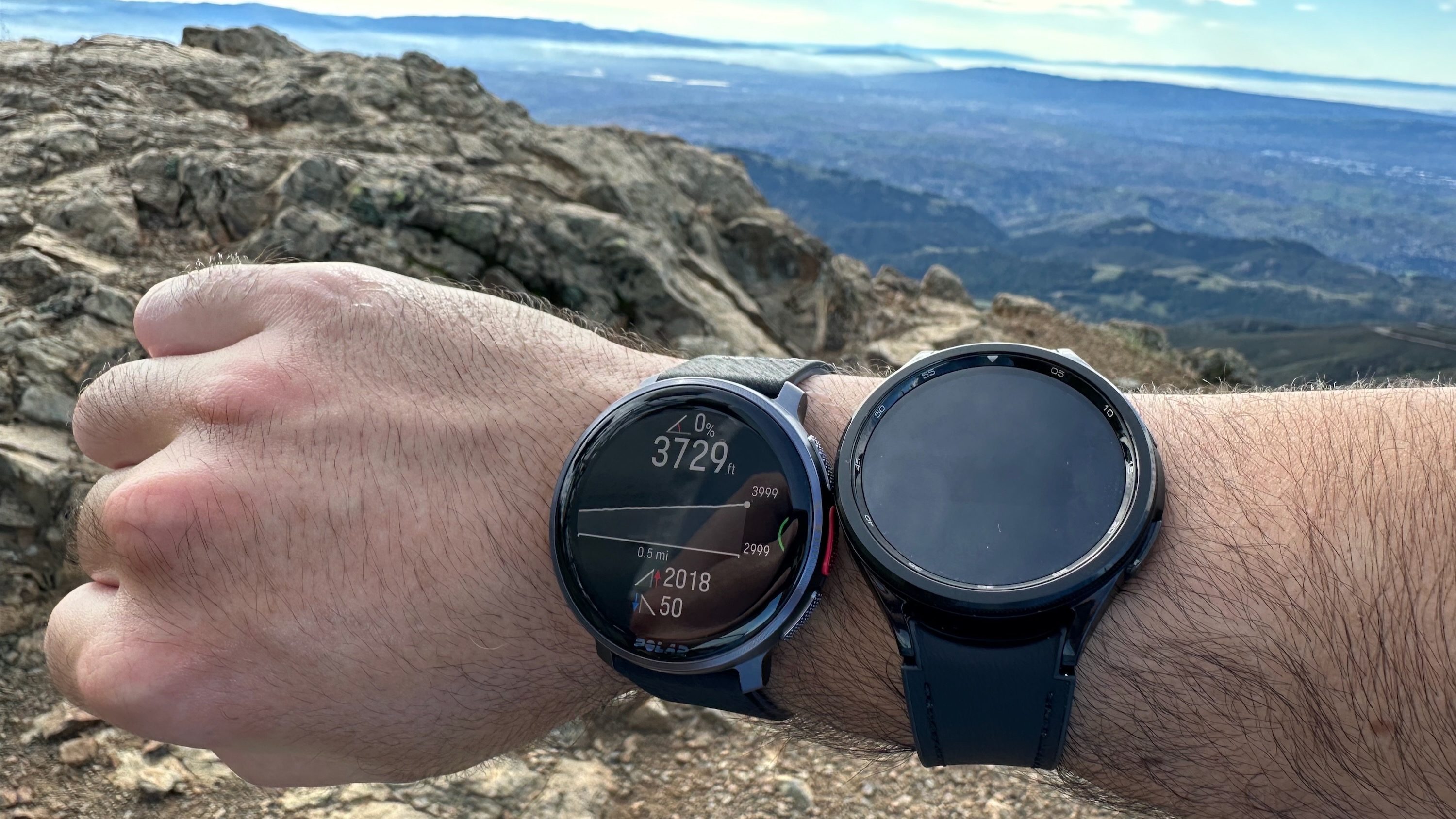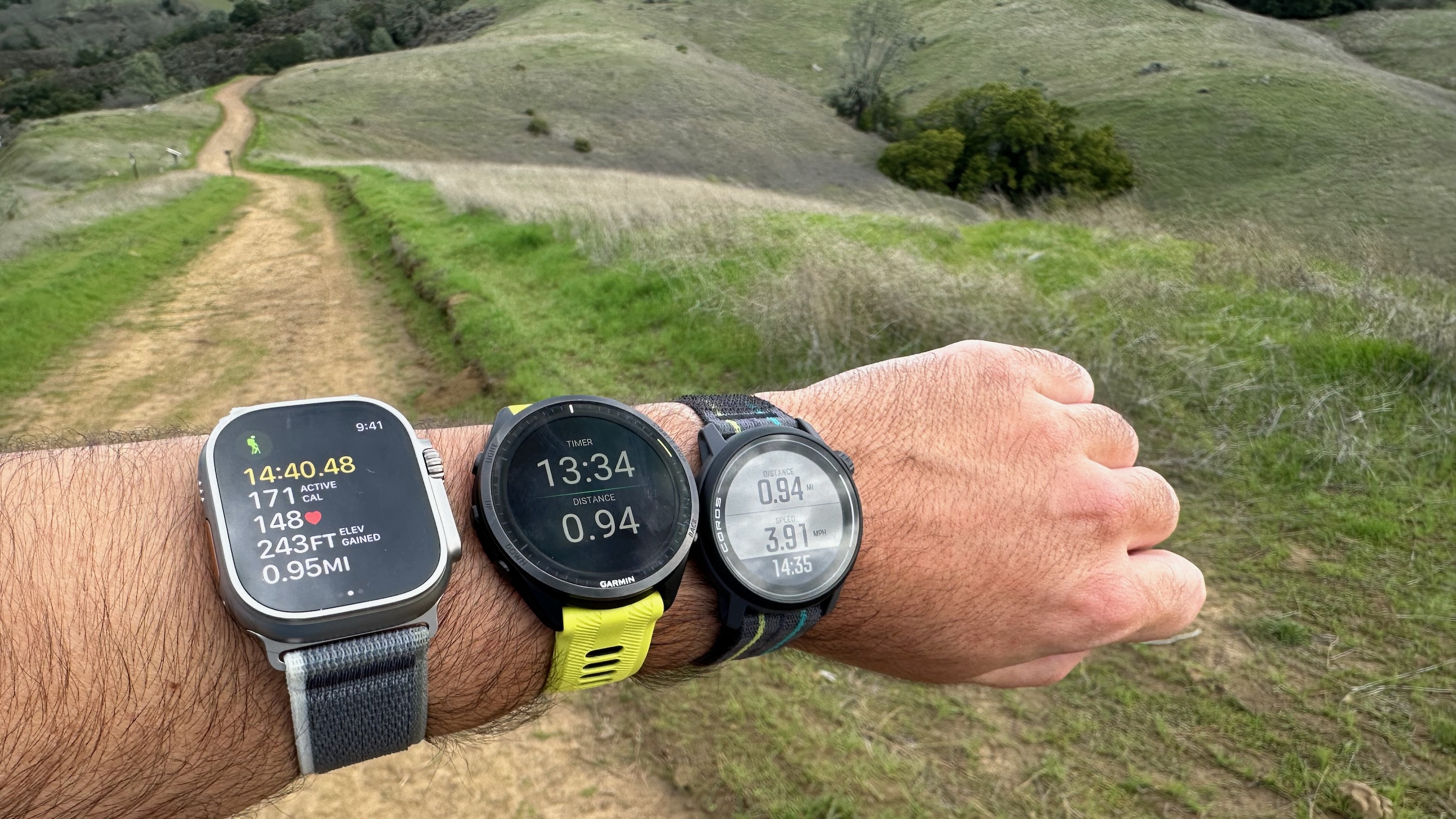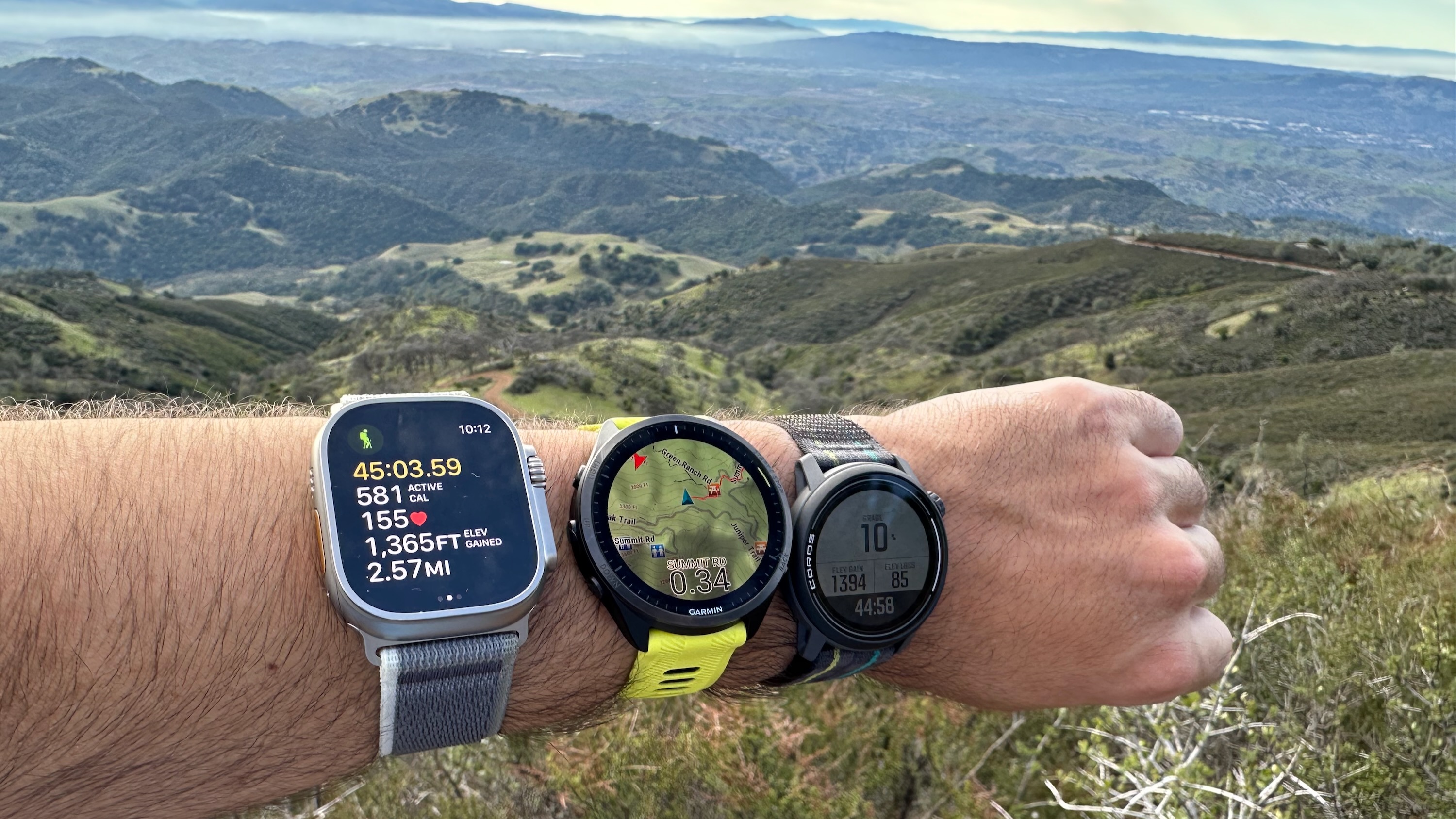I wore five smartwatches to Mount Diablo’s peak. These brands were best for elevation accuracy
Last weekend, I strapped on five fitness smartwatches, drove to Mount Diablo State Park in California, and hiked about 2,100 feet to the summit. Why? To decide which smartwatch brand — Apple, COROS, Garmin, Polar, or Samsung — was most accurate for tracking elevation.
Most high-end smartwatches sport a barometric altimeter to judge your elevation gain during outdoor workouts. Altimeters use air pressure changes to calculate elevation changes in coordination with GPS data. But some are more accurate than others, and most brands don’t let you calibrate your starting position manually.
I’ve wanted to test this for some time, ever since my experiment last year when I wore six smartwatches for 6,000 steps to see which came closest to the real number. Since then, I’ve also done several multi-watch GPS accuracy tests for reviews, but these have all been two-dimensional tests: I’ve never known how accurate my watch is when it tells me I’ve climbed X feet or Y flights of stairs.

For my test, I chose three watches I’ve already reviewed — the COROS PACE 3, Garmin Forerunner 965, and Samsung Galaxy Watch 6 Classic — along with two I’m currently reviewing, the Apple Watch Ultra 2 and Polar Vantage V3.
Apologies to the hikers with favorite brands I didn’t bring along; my arms, skinny as they are, only have so much room. Charging and fitting on five watches was more than enough to manage, and they got me plenty of side glances on the trail as it was.
Plus, some of my favorite wearables (like the Fitbit Charge 6) don’t have altimeters at all, meaning they can’t be trusted for elevation data, aside from GPS estimates.
Thankfully, you can easily test your own smartwatch’s accuracy if you want!
Simply choose a hike on a site like Alltrails, such as the Mount Diablo via Summit Trail hike, and note the minimum and maximum elevation, along with total elevation gain. Then, hike it yourself and compare your watch’s results to the reality.
The table below shows the results of my smartwatch elevation accuracy test:
| Device name | Starting elevation | Max elevation | Total elevation gain |
|---|---|---|---|
| Exact GPS data (AllTrails) | 1,770 feet | 3,849 feet | 2,139 feet |
| Apple Watch Ultra 2 | 1,779 feet | 3,873 feet | 2,147 feet |
| COROS PACE 3 | 1,736 feet | 3,825 feet | 2,231 feet |
| Garmin Forerunner 965 | 1,761 feet | 3,841 feet | 2,231 feet |
| Samsung Galaxy Watch 6 Classic | 1,509 feet | 3,606 feet | 2,026 feet |
Note: You likely noticed a missing data row. That’s because sometime on the way down Mt. Diablo, my Polar Vantage V3 crashed, showing an endless loop of the Polar logo, then factory reset itself after I got home. The Polar subreddit shows other folks have had similar issues in the past.
Luckily, I snapped a photo near the peak showing my elevation (3,729 feet) and total gain (2,018 feet) at the time. Add another 100 feet or so of climbing, and the Vantage V3 was probably quite close to what my other watches showed; I just can’t give exact data, especially without the starting elevation. I’m really disappointed that this glitch messed up my test!
Determining the ‘best’ smartwatch altimeter

We have three metrics to help judge which smartwatch is best for elevation accuracy. Let’s start with minimum elevation, which is the initial auto-calibrated result the smartwatch makes when you start a workout.
Garmin and Apple miraculously tied here, both nine feet off. COROS was 34 feet short, or 25 worse than Garmin, but that’s nothing compared to Samsung’s result, which fell 261 feet short.
Looking next at max elevation, Garmin fell eight feet short of the official summit number. Basically, even though Garmin was off by a few yards each time, the gap between the minimum and maximum (2,080 feet) was just one foot different from the official data (2,079 feet).
COROS’ max result, 3,825 feet, was 24 feet short; again, though, if you look at the total difference (2,089 feet), that’s just 10 feet off the satellite data, which most hikers will happily accept.
Apple’s max-elevation data had me floating about 24 feet above Mt. Diablo, and its total difference (2,094) is 15 feet above. Considering all the smarts you get with an Apple Watch Ultra 2 compared to most fitness smartwatches, that’s a minor discrepancy that watchOS fans probably won’t mind.
You could also call the Galaxy Watch 6 Classic’s total elevation difference (2,097 feet) perfectly respectable, but the max elevation was just as absurdly short of the mark as the minimum elevation. Samsung had an Alti-Barometer app on the Galaxy Store that would have fixed this, but it was designed for Tizen OS and doesn’t work properly with Wear OS.

Lastly, we can look at total elevation gain, which (to clarify) is different from the subtracted sums above because you gain extra elevation whenever the trail goes up and down.
At first glance, the Apple Watch Ultra 2 crushed this metric, only overreporting by eight feet. The problem is that I did go up and down the stairs at the summit a couple of times, as well as took some side paths with mini-hills that added unnecessary ups and downs.
So even though the Garmin Forerunner 965 and COROS PACE 3 both measured an extra 92 feet of climbing, I wonder if my actual result was somewhere in between these two and the Ultra 2. The fact that they both had the exact same result was another surprise.
The good thing about the latest Garmin Forerunner watches, the PACE 3, and the Apple Watch Ultra 2 is that they all have dual-band GPS tracking. If the mountain you’re climbing is blocking the line of sight to the nearest GPS satellite, they can use another satellite to calibrate your position. And since watches use GPS to augment altimeter results, that means you’re very likely to get something close to an accurate result.
If you’re using a GPS-only watch like the Galaxy Watch 6 Classic, your elevation results could end up more of a crapshoot despite the built-in altimeter. The wrong starting elevation may not matter from a practical standpoint, but the fact that it underreported my elevation gain by at least 100 feet is less forgivable.
I’m hoping that Samsung will fix its fitness issues in 2024 and that the Galaxy Watch 7 Pro is more trustworthy. In the meantime, though, I’m really happy with how Garmin, COROS, and Apple performed in my test. Garmin won for specific elevation numbers, Apple won (maybe) for elevation gain, and COROS came close on both counts.
Rather than rooting for one clear winner, I want as many brands as possible to give you accurate results so hikers and cyclists have a wealth of choices.
If you’re currently on the hunt for a new smartwatch, bike computer, or handheld GPS, my recommendation is that you don’t take it for granted that an altimeter in the specs sheet is a sure sign of reliability. Keep your receipt, take your new watch out on the trail ASAP, and make sure that you get results that are reasonably accurate.